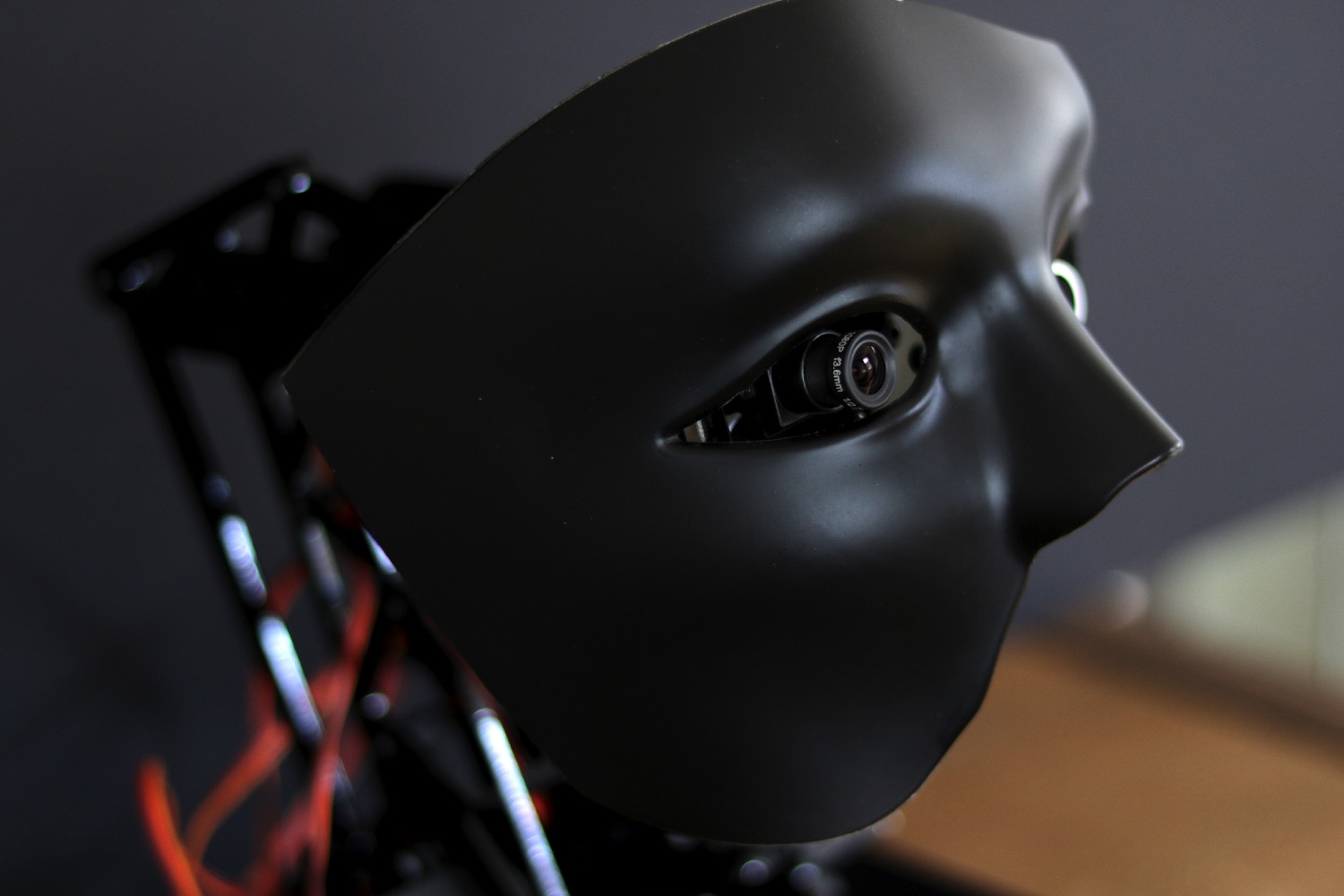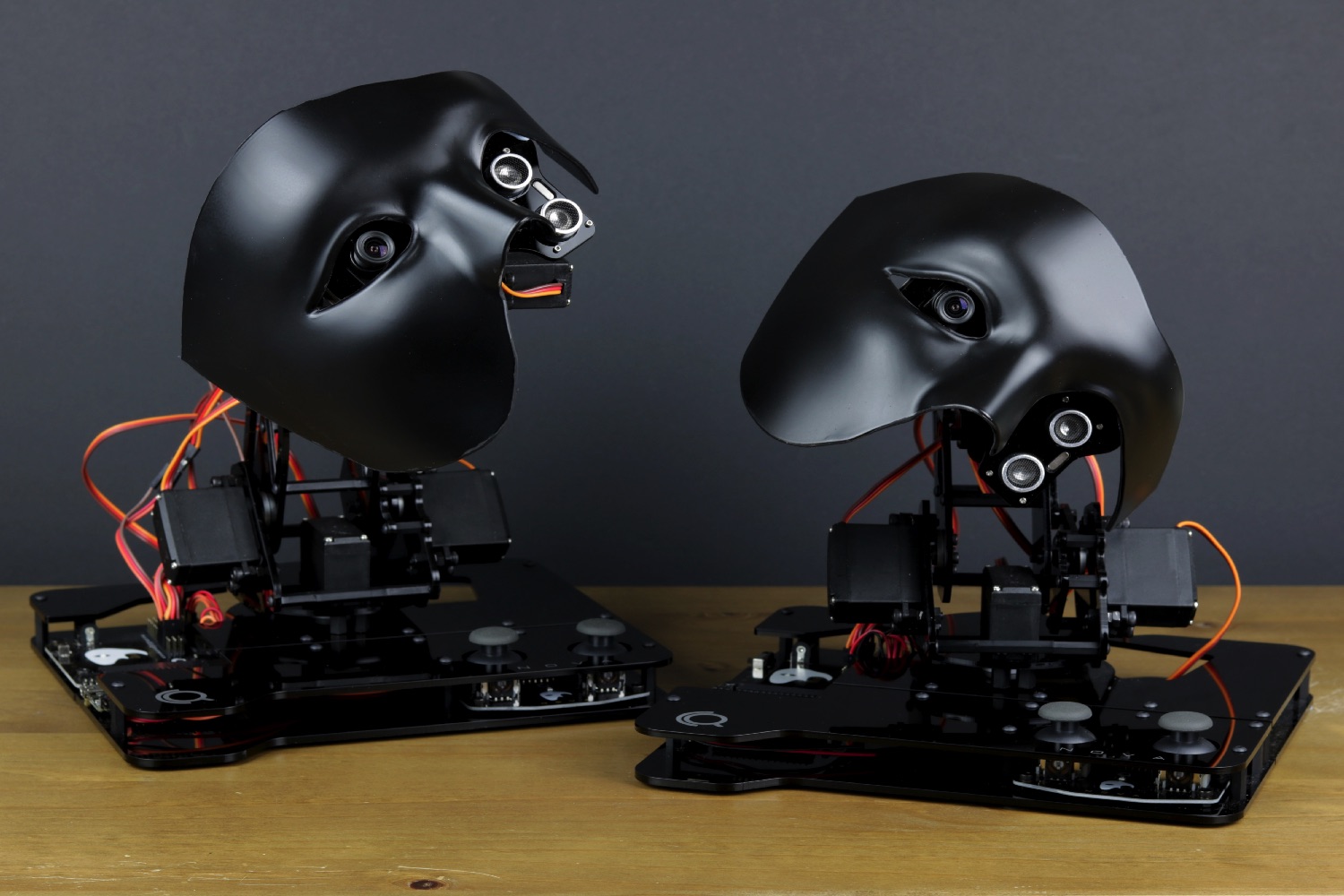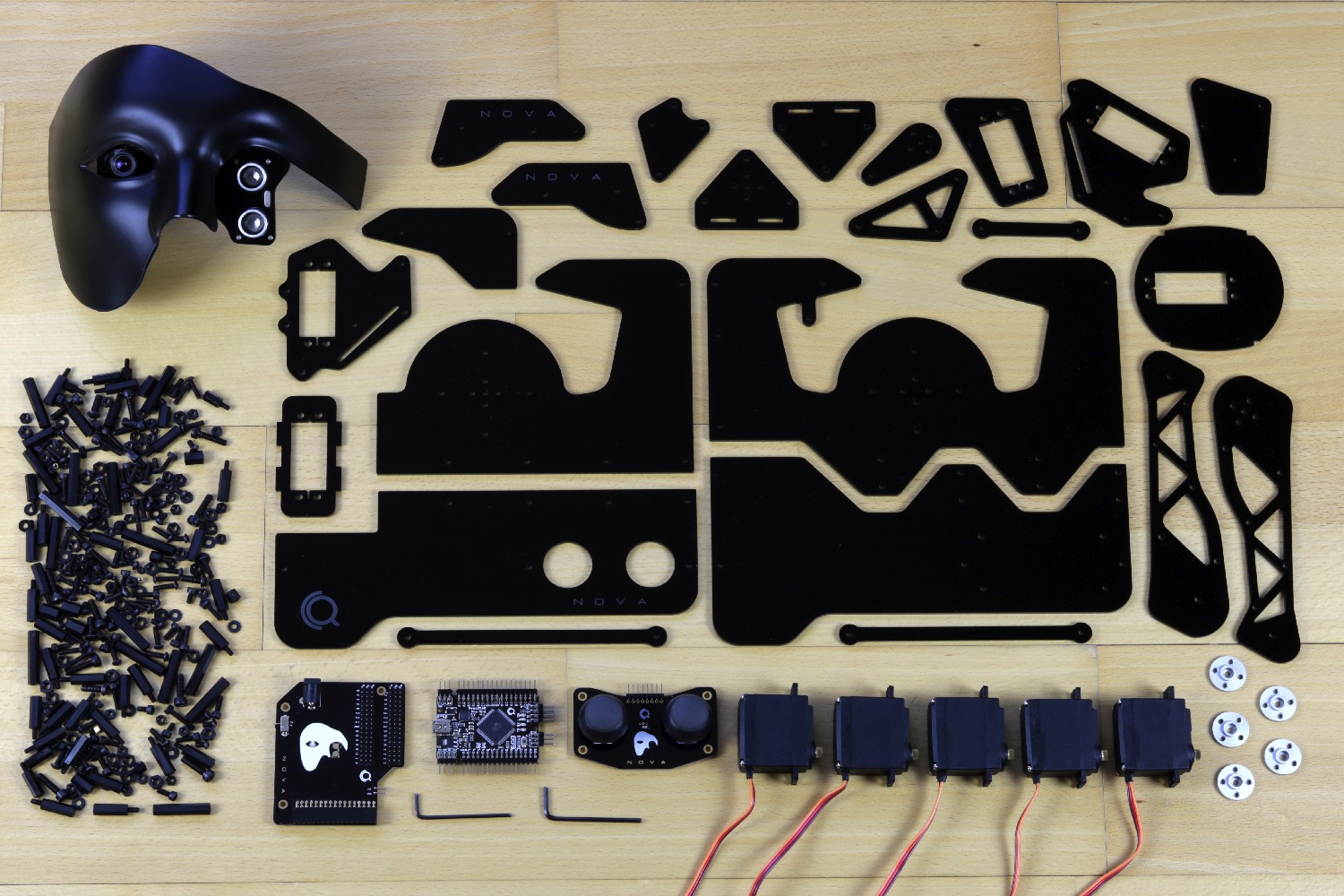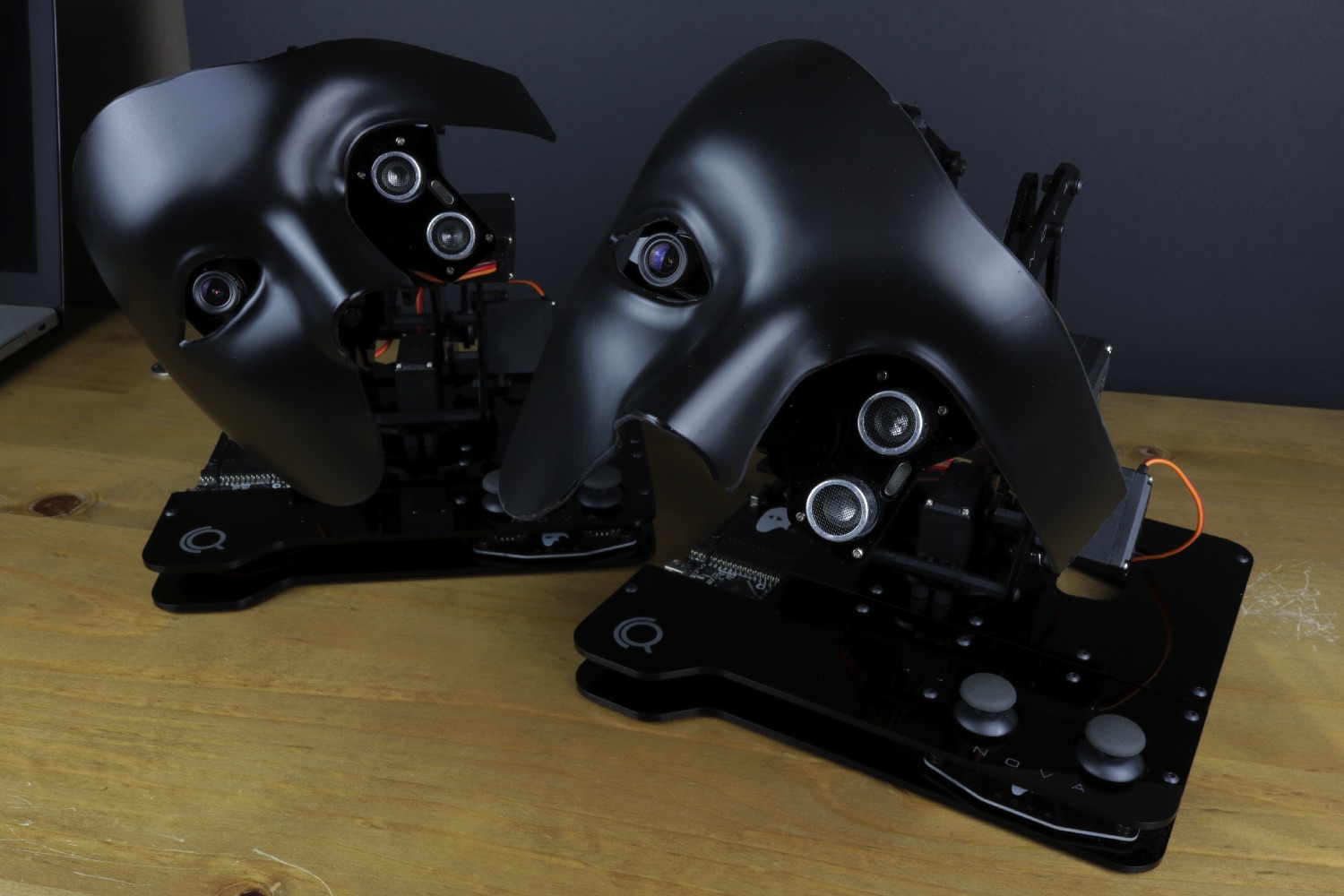Creoqod’s Nova is a do-it-yourself kit, which lets users build their own artificially intelligent robot, while practicing their coding and engineering skills. It’s compatible with Windows, Mac, and Linux, and promises to be both a great tool for newcomers, and a fun testing platform for seasoned professionals. Building it will provide a good overview of various engineering and computer science concepts, ranging from computer vision and image processing to kinematics and control theory. The finished robot can recognize and track faces, identify colors, measure distances, and move in five different axis — all while looking like a cross between The Terminator and Andrew Lloyd Webber’s aforementioned scarred musical maestro.
“Nova is fully customizable,” Cem Eltutar, CEO of Creoqod, told Digital Trends. “Users can literally do anything they can imagine with it. Any type of sensor and electronic gadgets can be connected to add new functionalities — to name a few, Bluetooth, Wi-Fi, microphone, speakers, thermal vision, wheels, and additional motors. Nova will appeal to everyone who has a passion and interest in robotics, artificial intelligence, electronics, computer programming and engineering.
This kit is ideal for people who want to see and understand the working principles of such a device. Additionally, we will be providing Nova to universities for their robotics, engineering and computer programming classes. Many concepts that are only thought about theoretically in the classroom can be demonstrated practically with Nova. This increases the quality of the education and adds value to the learning experience.”
Nova can currently be pre-ordered on Kickstarter. An early bird version of the kit — consisting of board, servo motors, servo shield, joystick, acrylic body parts, mask, HD camera, ultrasonic sound sensor, jumper wires, power adapter, USB data cable, and assorted screws, nuts, and spacers — will set you back $183. You also get an assembly instruction booklet, while tutorials and educational guides are provided through Qode Share. Shipping is set to take place in May 2018.







